Sun Beneath
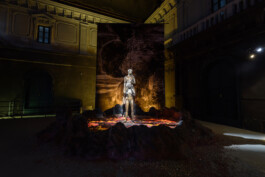



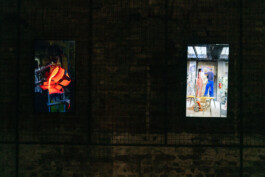



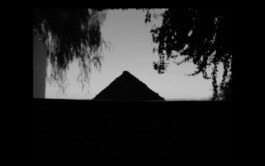
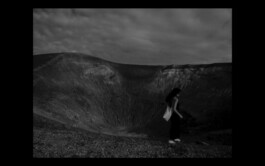
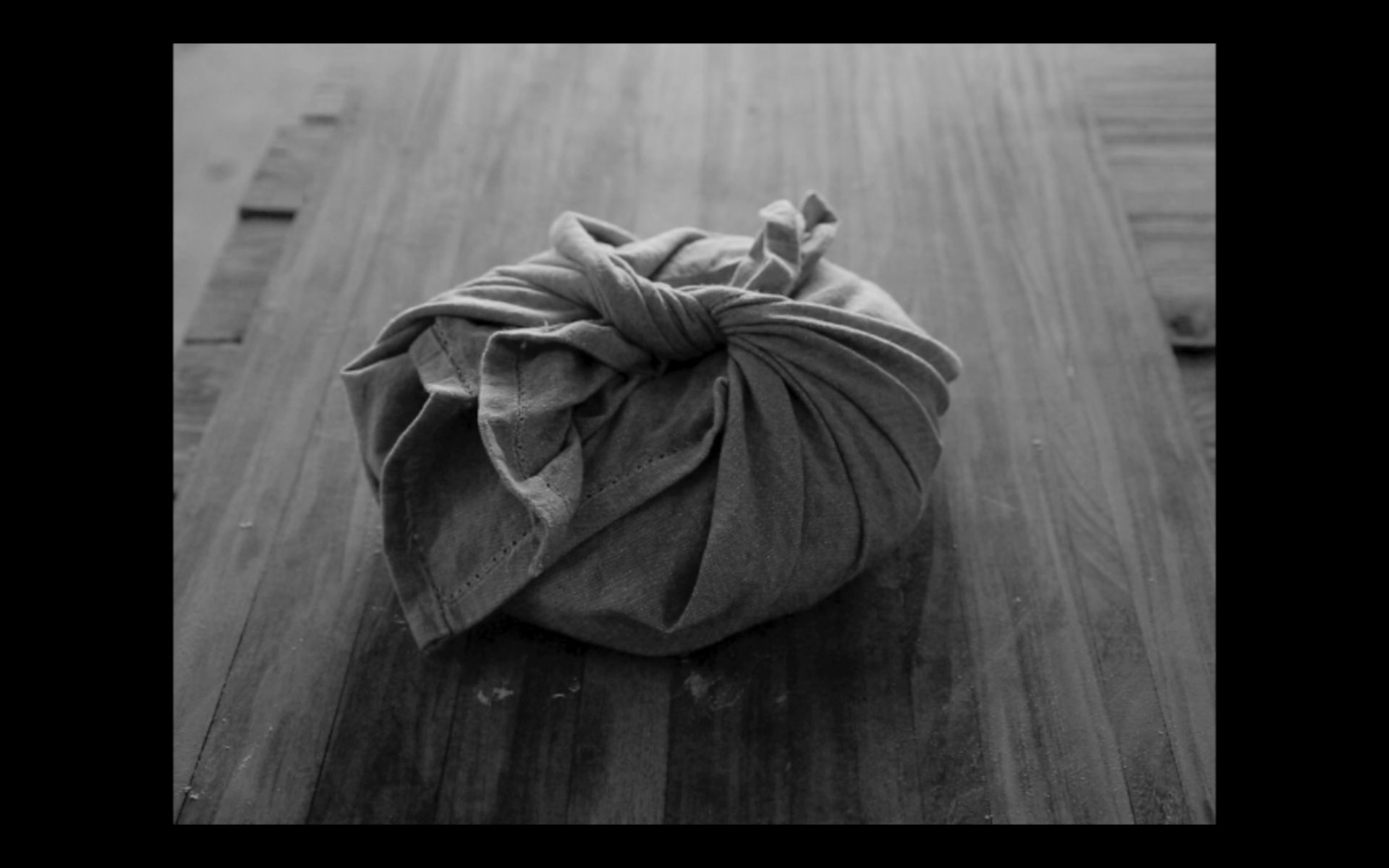
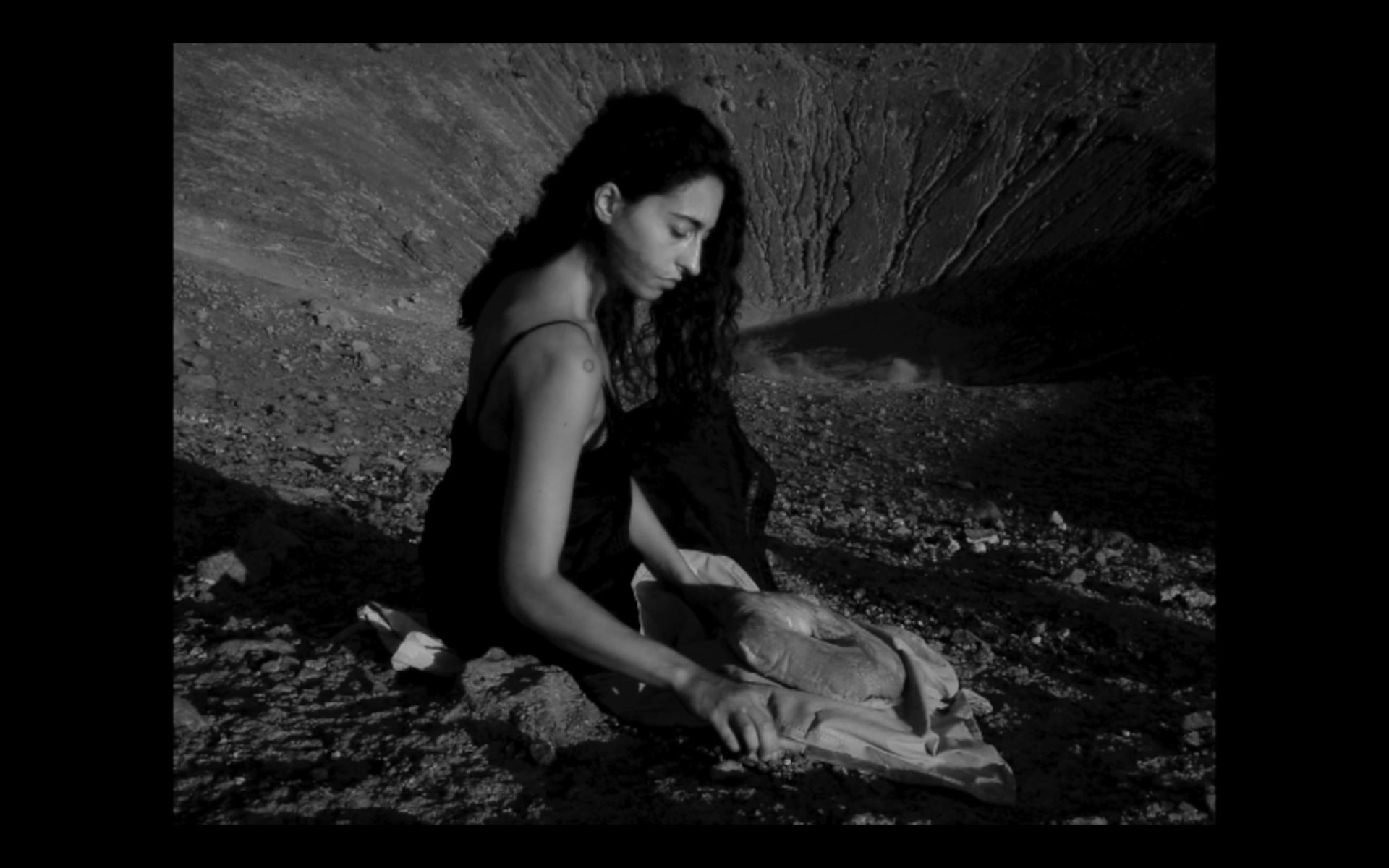

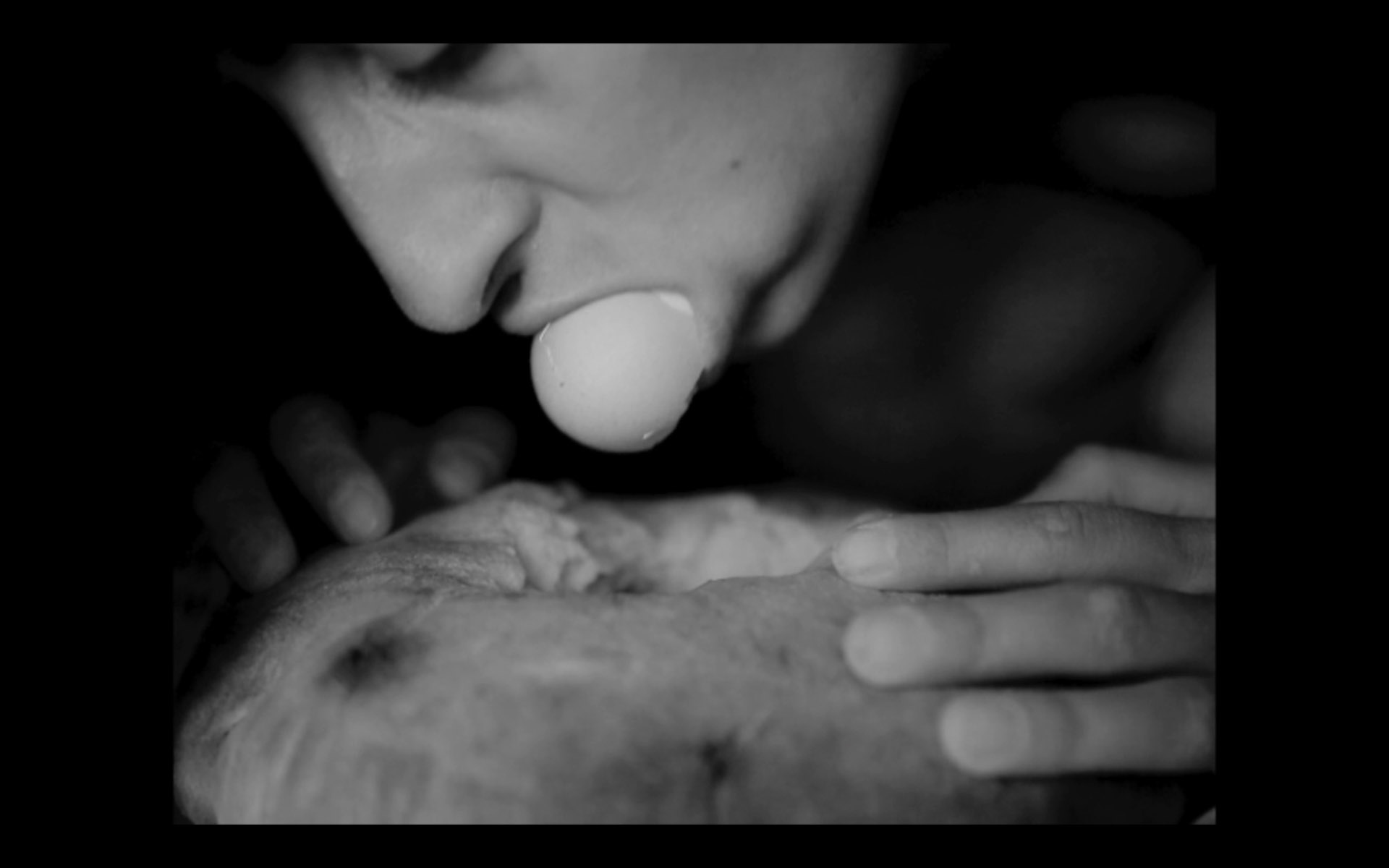
Sun Beneath is the title of an exhibition by Matilde Romagnoli, a young Italian-Austrian-Hungarian artist, whose works take us to a world of chthonic concepts, human nature, self-reflection, allegory, hermeticism, but also theatrical and dramatic presentations. She draws inspiration from myriad sources: the island and the volcano of the same name—Stromboli; the 1950 Roberto Rossellini’s film Stromboli, Land of God; the 1984 film Under the Volcano directed by John Huston based on Malcom Lowry’s 1947 novel of the same name; the true events that occurred on Alicudi Island between 1903-1905, when the inhabitants consumed rye bread contaminated with ergot fungus, which caused hallucinations that were powerfully reflected in all aspects of the little isolated island’ life (the main ingredient obtained from ergot fungus was subsequently used to synthesize the hallucinogenic drug LSD). […]
[…] “The composition is characterized by a precise impression of sensibility, as seen in the modelling of the form, with allusions to the lightness of a physical body, openness of plans, and the suggestion of movement of the composite volumes, as well as a delicate bronze patination achieved through the meticulous application of a thin layer of sulphur and water. The artist attempts to transpose an element of the female nature, its sensuality, lightness, and subtlety, with a clear reference to contemplation evoked by the portrait of a seated figure with closed eyes, which could be associated with a state of rest, meditation, or some kind of surrender, in contrast to the standing figure with open eyes, looking ahead with vigilance.” […]
[…] Matilde Romagnoli's Sun Beneath is a three-dimensional metaphor of human transformation, the influence of the world and circumstances on our lives, the protruding of the imagination’s content (lava) from the depths of our own being (Earth), rising from the unconscious, hypnotic, concealed, the purification from everything superfluous, static and ephemeral, but also overcoming one's opposites and dual natures in order to permeate and integrate all aspects of one's psyche, which leads to equilibrium. The artist’s sublime, emotional, and philosophical poetics is evident in her ideas, while her expressive power is transferred to a form on the edge of refinement and expressiveness, intense in its sub-textual potential, introducing the mind into a state of alertness and questioning. The exhibition's title can be interpreted as a personal initiation process, unveiling the secret corners of the psyche, inner movement, both mechanical and spiritual going forward, which is precisely what all of these images remind us of. In the domain of thoughts and ideas, we move closer to our own character, which we form despite personal or external challenges. That personal process within dominant social-cultural-historical contexts and in the eternal juxtaposition of new and old ideas and sensations, is known as the mystery of life that shapes us, or as Barbara Hepworth said: “Body experience...is the center of creation”. Similarly, space, movement and the illusion of time are required for Matilda Romagnoli's symbolic Sun to shine from "the depths below," in which the thin line between what is now and what was yesterday constantly runs and intertwines through the senses and mind of the artist, and then observers.
Dejan Vučetić, art historian
Sun Beneath














Sun Beneath is the title of an exhibition by Matilde Romagnoli, a young Italian-Austrian-Hungarian artist, whose works take us to a world of chthonic concepts, human nature, self-reflection, allegory, hermeticism, but also theatrical and dramatic presentations. She draws inspiration from myriad sources: the island and the volcano of the same name—Stromboli; the 1950 Roberto Rossellini’s film Stromboli, Land of God; the 1984 film Under the Volcano directed by John Huston based on Malcom Lowry’s 1947 novel of the same name; the true events that occurred on Alicudi Island between 1903-1905, when the inhabitants consumed rye bread contaminated with ergot fungus, which caused hallucinations that were powerfully reflected in all aspects of the little isolated island’ life (the main ingredient obtained from ergot fungus was subsequently used to synthesize the hallucinogenic drug LSD). […]
[…] “The composition is characterized by a precise impression of sensibility, as seen in the modelling of the form, with allusions to the lightness of a physical body, openness of plans, and the suggestion of movement of the composite volumes, as well as a delicate bronze patination achieved through the meticulous application of a thin layer of sulphur and water. The artist attempts to transpose an element of the female nature, its sensuality, lightness, and subtlety, with a clear reference to contemplation evoked by the portrait of a seated figure with closed eyes, which could be associated with a state of rest, meditation, or some kind of surrender, in contrast to the standing figure with open eyes, looking ahead with vigilance.” […]
[…] Matilde Romagnoli's Sun Beneath is a three-dimensional metaphor of human transformation, the influence of the world and circumstances on our lives, the protruding of the imagination’s content (lava) from the depths of our own being (Earth), rising from the unconscious, hypnotic, concealed, the purification from everything superfluous, static and ephemeral, but also overcoming one's opposites and dual natures in order to permeate and integrate all aspects of one's psyche, which leads to equilibrium. The artist’s sublime, emotional, and philosophical poetics is evident in her ideas, while her expressive power is transferred to a form on the edge of refinement and expressiveness, intense in its sub-textual potential, introducing the mind into a state of alertness and questioning. The exhibition's title can be interpreted as a personal initiation process, unveiling the secret corners of the psyche, inner movement, both mechanical and spiritual going forward, which is precisely what all of these images remind us of. In the domain of thoughts and ideas, we move closer to our own character, which we form despite personal or external challenges. That personal process within dominant social-cultural-historical contexts and in the eternal juxtaposition of new and old ideas and sensations, is known as the mystery of life that shapes us, or as Barbara Hepworth said: “Body experience...is the center of creation”. Similarly, space, movement and the illusion of time are required for Matilda Romagnoli's symbolic Sun to shine from "the depths below," in which the thin line between what is now and what was yesterday constantly runs and intertwines through the senses and mind of the artist, and then observers.
Dejan Vučetić, art historian